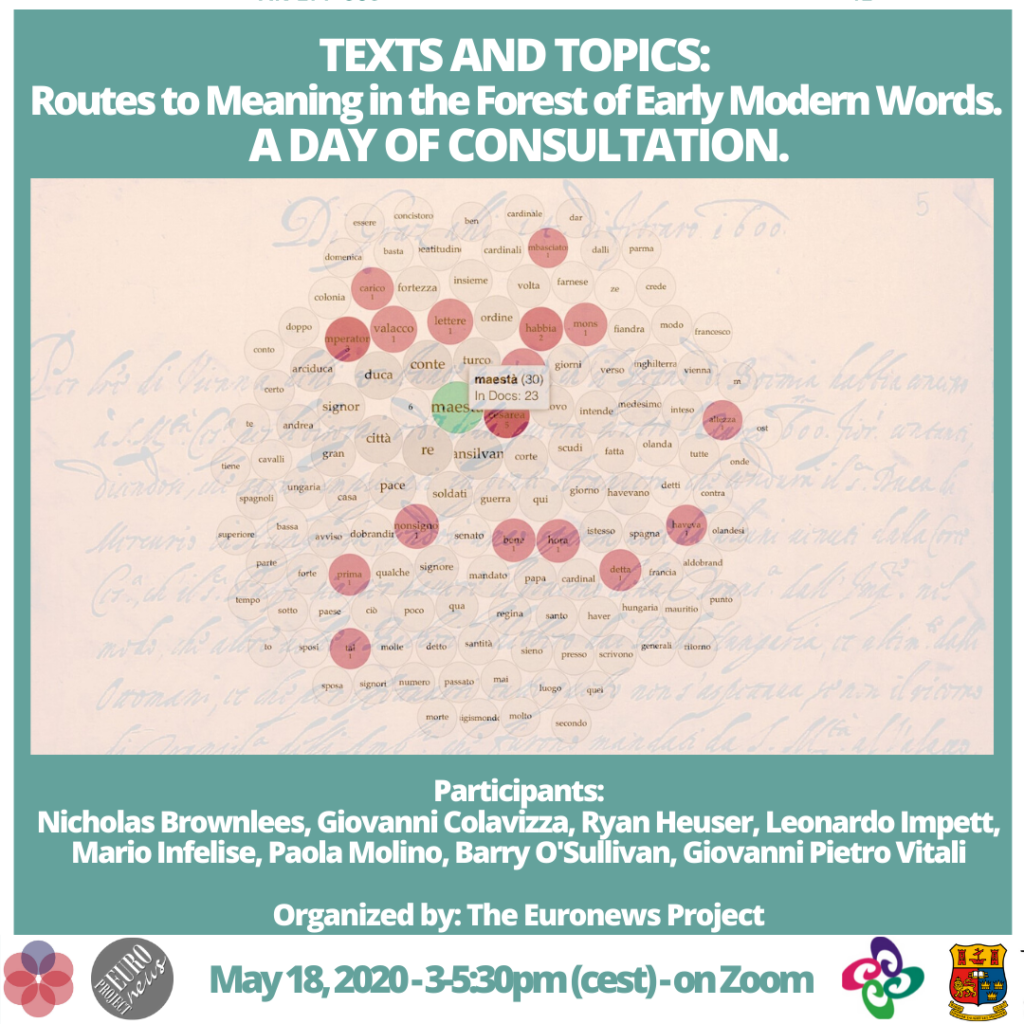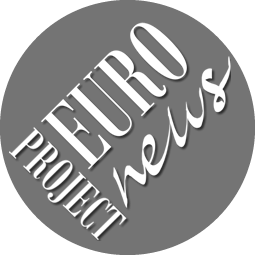
On May 18th, 2020, the EURONEWS project held an online Consultation Day on the topic of Texts and Topics: Routes to Meaning in the Forest of Early Modern Words.
Giovanni Colavizza (Assistant Professor of Digital Humanities at the University of Amsterdam) talked about Some enthusiastically sober thoughts on “data-driven” historical research, focusing specifically on the dos and don’ts of analyzing data collected from historical sources. Ryan Heuser (Junior Research Fellow at King’s College, Cambridge) presented a thorough overview of some useful tools to analyze early modern texts, and showed the audience the results of his current project on word vectors in the 18th century. Barry O’Sullivan (Director, Insight Centre for Data Analytics, School of Computer Science & IT, University College Cork), walked us through the latest achievements in Artificial Intelligence, showing different approaches that could be applied to the humanities in general and to early modern sources in particular. As one of the leading experts on early modern newsletters, Nicholas Brownlees, (Professor at the University of Florence) discussed some of the issues when analyzing digitally translated avvisi and mapping their circulation and manipulation. As respondents, Paola Molino (Professor at the University of Padua) and Giovanni Pietro Vitali (Marie Curie Fellow, University College Cork, University of Reading, New York University) addressed the main themes that surfaced during the presentations: the efficacy of Optical Character Recognition and of Handwritten Text Recognition applied to Italian texts; how to build and preserve the ‘right’ corpus; the importance of having clear research questions in mind when choosing the kinds of digital tools.
We were pleasantly surprised by the continuous engagement of the ‘silent’ audience (of almost 50 attendees) throughout the entire event, which lasted almost three full hours, and the stimulating conversation exceeded our expectations.
Thanks to this day of consultation we had the chance to get to know new projects and meet new scholars in both the digital humanities and early modern studies, some of whom will be our partners in future projects. Most importantly, we were able to understand further how to tackle our vast corpus of multilingual handwritten newsletters, ranging from mid 16th-century to early 18th century.
Below, the recording of the event:
